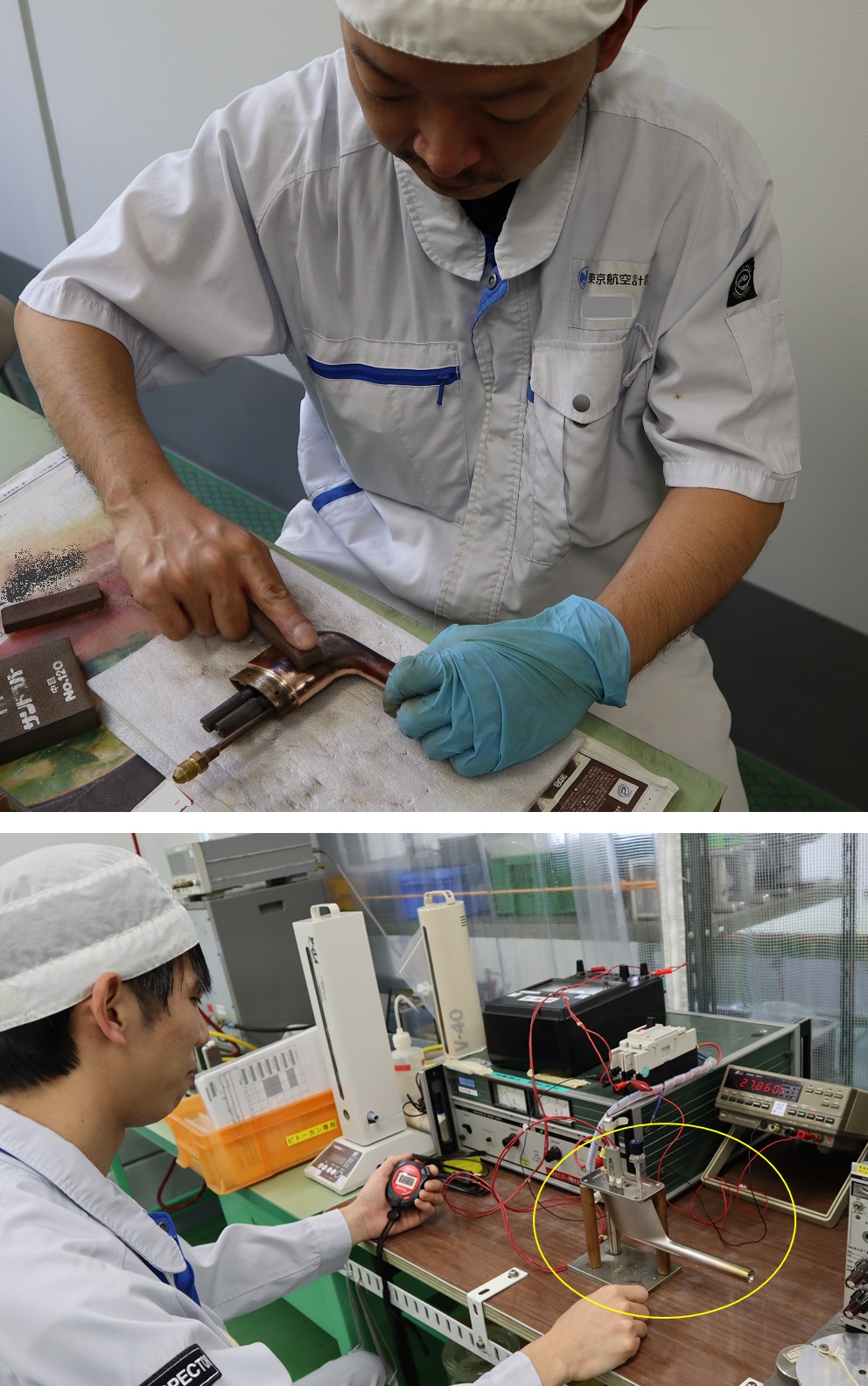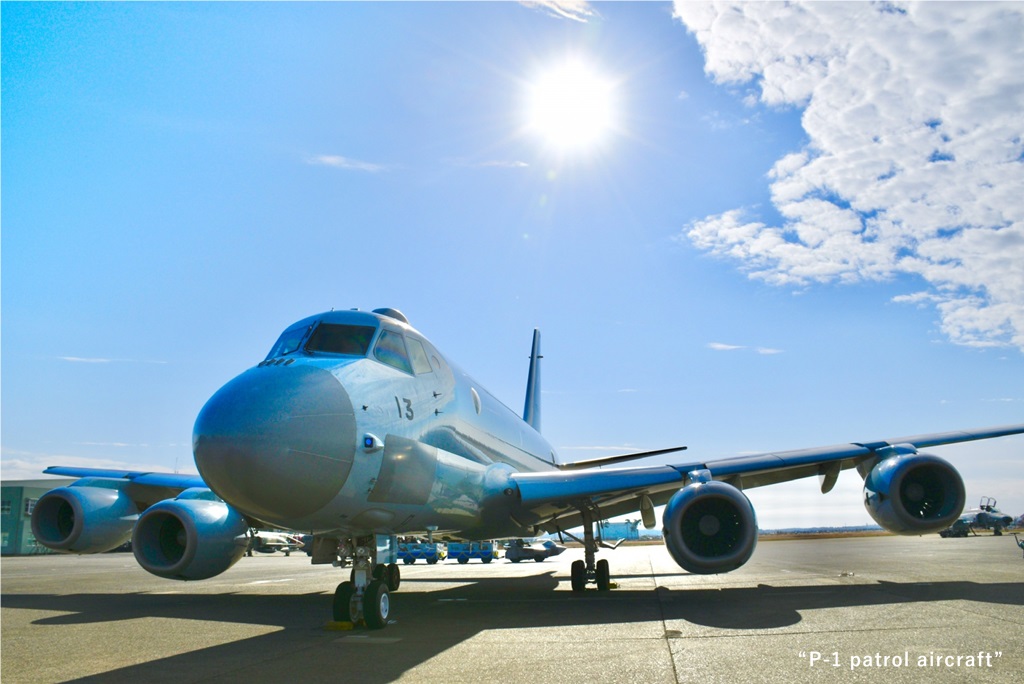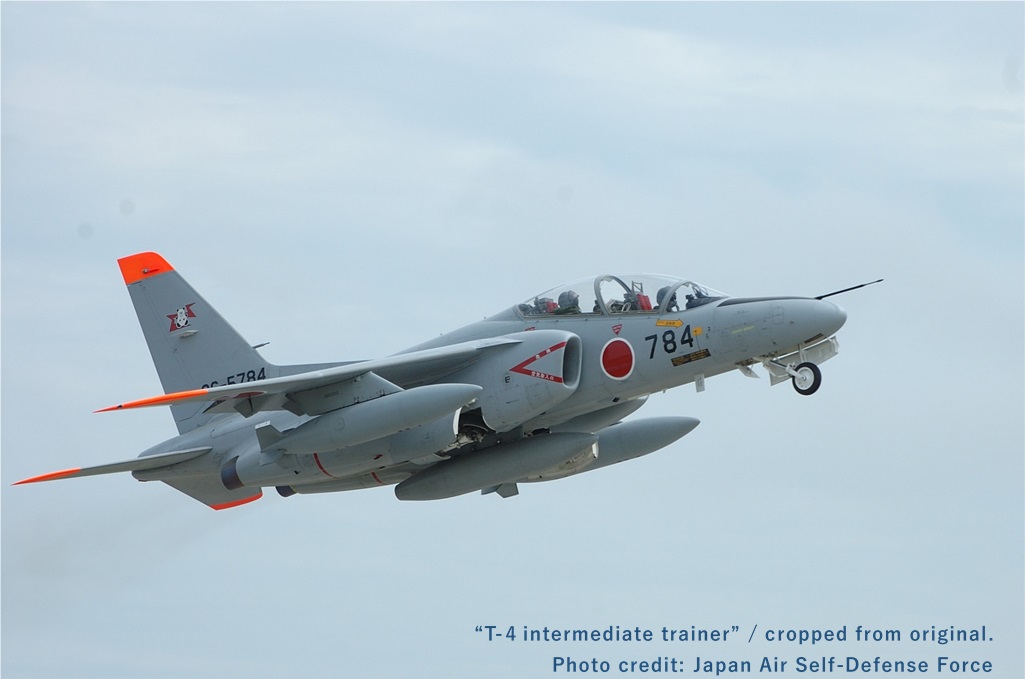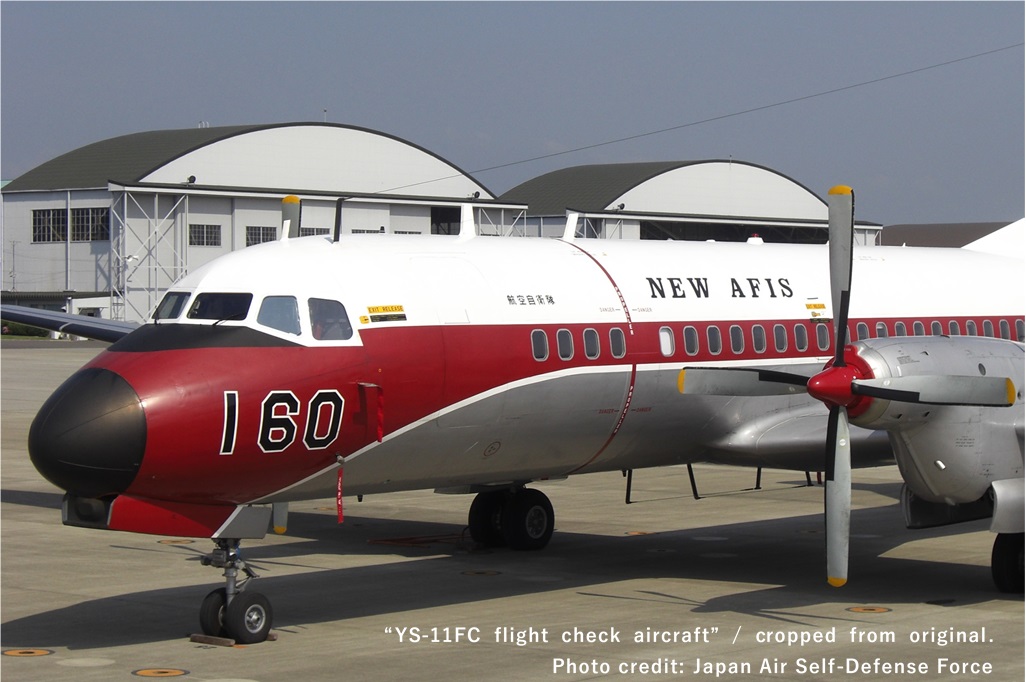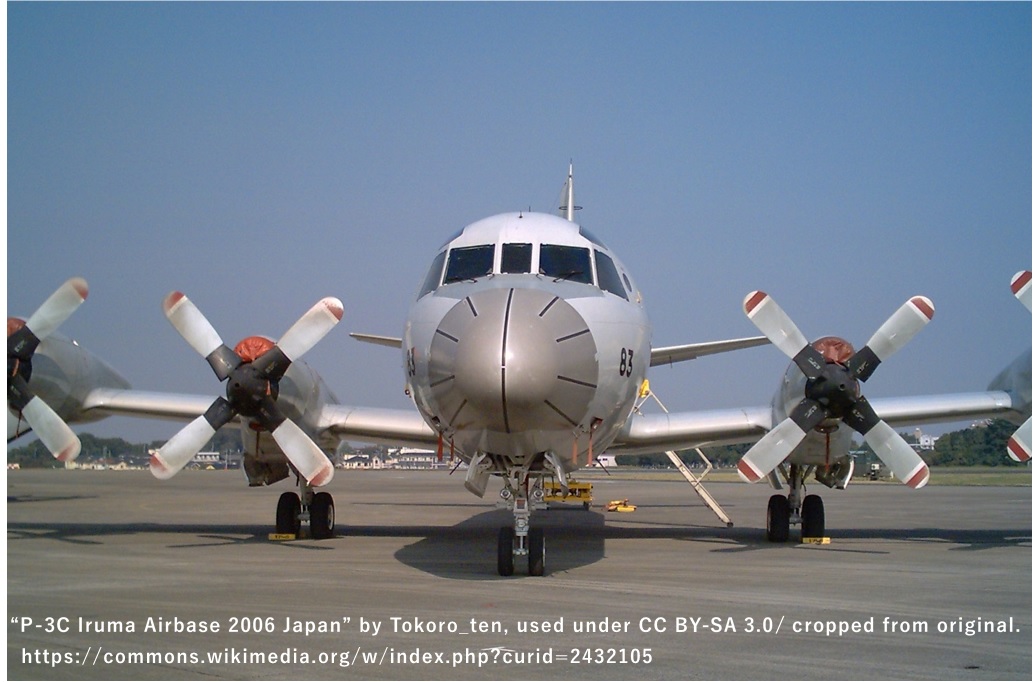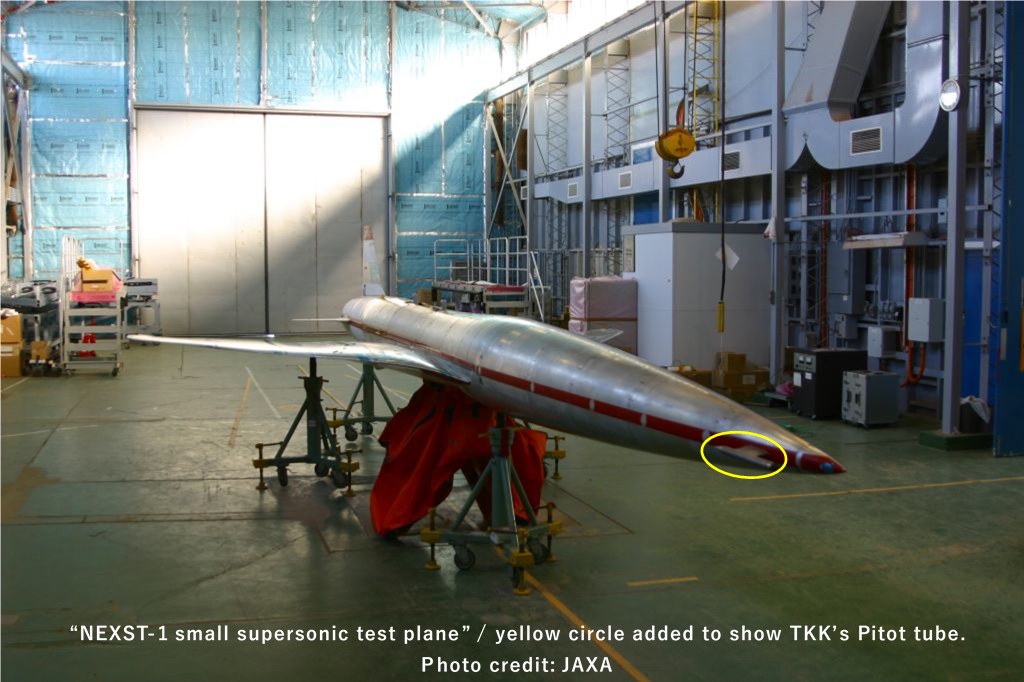What Is a Pitot Tube?
Measuring speed? Not really.
When you google the word "pitot tube", you may find an explanation saying that it is a device to measure aircraft speed. To be exact, though, it does not measure speed directly. A Pitot tube actually measures the total pressure of a fluid like a gas or liquid. There is also a type called Pitot-static tube, which detects the static pressure in addition to the total pressure.
Total pressure is the sum of static pressure (i.e. pressure of the fluid itself) and dynamic pressure (i.e. kinetic energy of the fluid expressed with a pressure unit.)
These pressure values are used to calculate the velocity of fluids.
Pitot tubes have been used to determine the speed of things like ships and flowing water since their invention, and eventually airplanes.
What a Pitot tube measures on an aircraft is the airstream flowing from the direction of travel as the aircraft moves forward. As shown in the picture on the right, they are usually mounted near the nose, with their tube openings pointing upstream. What a Pitot tube measures on an aircraft is the airstream flowing from the direction of travel as the aircraft moves forward. As shown in the picture above , they are usually mounted near the nose, with their tube openings pointing upstream.
Total pressure is the sum of static pressure (i.e. pressure of the fluid itself) and dynamic pressure (i.e. kinetic energy of the fluid expressed with a pressure unit.)
These pressure values are used to calculate the velocity of fluids.
Pitot tubes have been used to determine the speed of things like ships and flowing water since their invention, and eventually airplanes.
What a Pitot tube measures on an aircraft is the airstream flowing from the direction of travel as the aircraft moves forward. As shown in the picture on the right, they are usually mounted near the nose, with their tube openings pointing upstream. What a Pitot tube measures on an aircraft is the airstream flowing from the direction of travel as the aircraft moves forward. As shown in the picture above , they are usually mounted near the nose, with their tube openings pointing upstream.
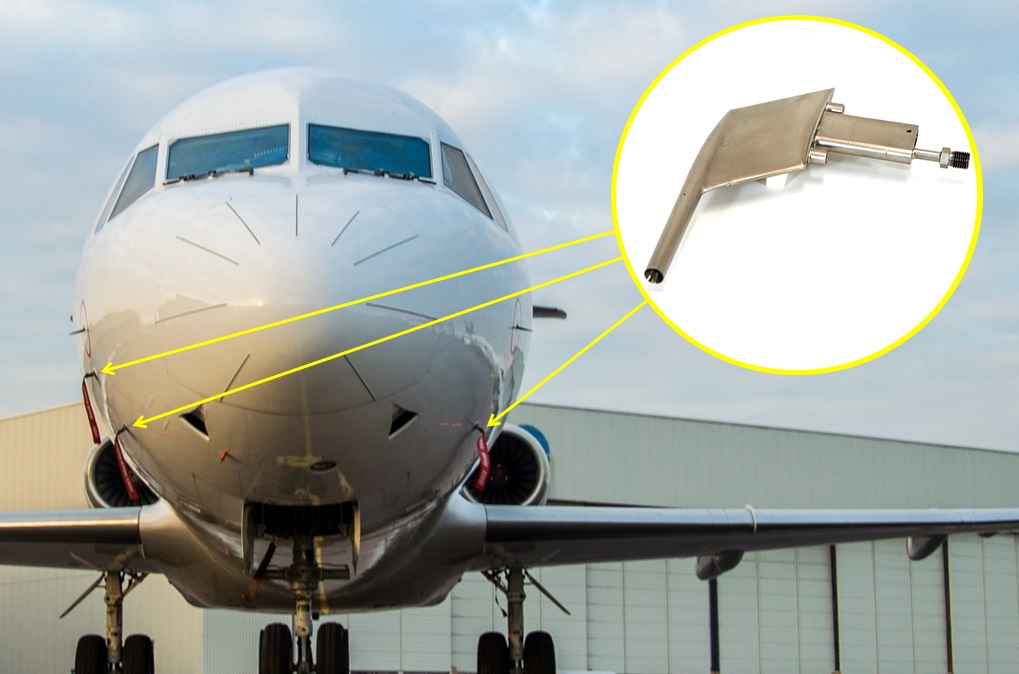
Pitot tube (in yellow circle) and its locations on an airliner;
clad in covers with red tags to prevent bugs and debris entering from the openings.
Speed of an airplane
The velocity, along with the angle of attack (AoA: the angle between the airstream and the wing chord), is an important factor necessary for airplanes to gain lift. The faster the aircraft speed is, the more lift is generated.
"Aircraft speed" discussed here is not the ground speed expressed with the distance travelled per unit time (like a speedometer on a car indicates to us), but the airspeed that is the speed of the aircraft relative to the air.
Suppose there is an airplane whose takeoff speed is 300 km/h. Even if it runs on the runway at the ground speed of 300 km/h, a tailwind of 10 km/h (≅ 5.4 kt) would make the airspeed 290 km/h, so the plane would not take off. Conversely, if the plane is running in a headwind of the same velocity, it would lift at the groundspeed of 290 km/h.
Bernoulli's principle provides us a formula to work out the airspeed with the dynamic pressure of the airflow. It is impossible to measure the dynamic pressure itself though. So aircraft obtain the total pressure from the Pitot tubes and the static pressure from the static ports (or both pressures from the Pitot-static tubes), and calculate the dynamic pressure of the airflow and eventually the airspeed.
"Aircraft speed" discussed here is not the ground speed expressed with the distance travelled per unit time (like a speedometer on a car indicates to us), but the airspeed that is the speed of the aircraft relative to the air.
Suppose there is an airplane whose takeoff speed is 300 km/h. Even if it runs on the runway at the ground speed of 300 km/h, a tailwind of 10 km/h (≅ 5.4 kt) would make the airspeed 290 km/h, so the plane would not take off. Conversely, if the plane is running in a headwind of the same velocity, it would lift at the groundspeed of 290 km/h.
Bernoulli's principle provides us a formula to work out the airspeed with the dynamic pressure of the airflow. It is impossible to measure the dynamic pressure itself though. So aircraft obtain the total pressure from the Pitot tubes and the static pressure from the static ports (or both pressures from the Pitot-static tubes), and calculate the dynamic pressure of the airflow and eventually the airspeed.
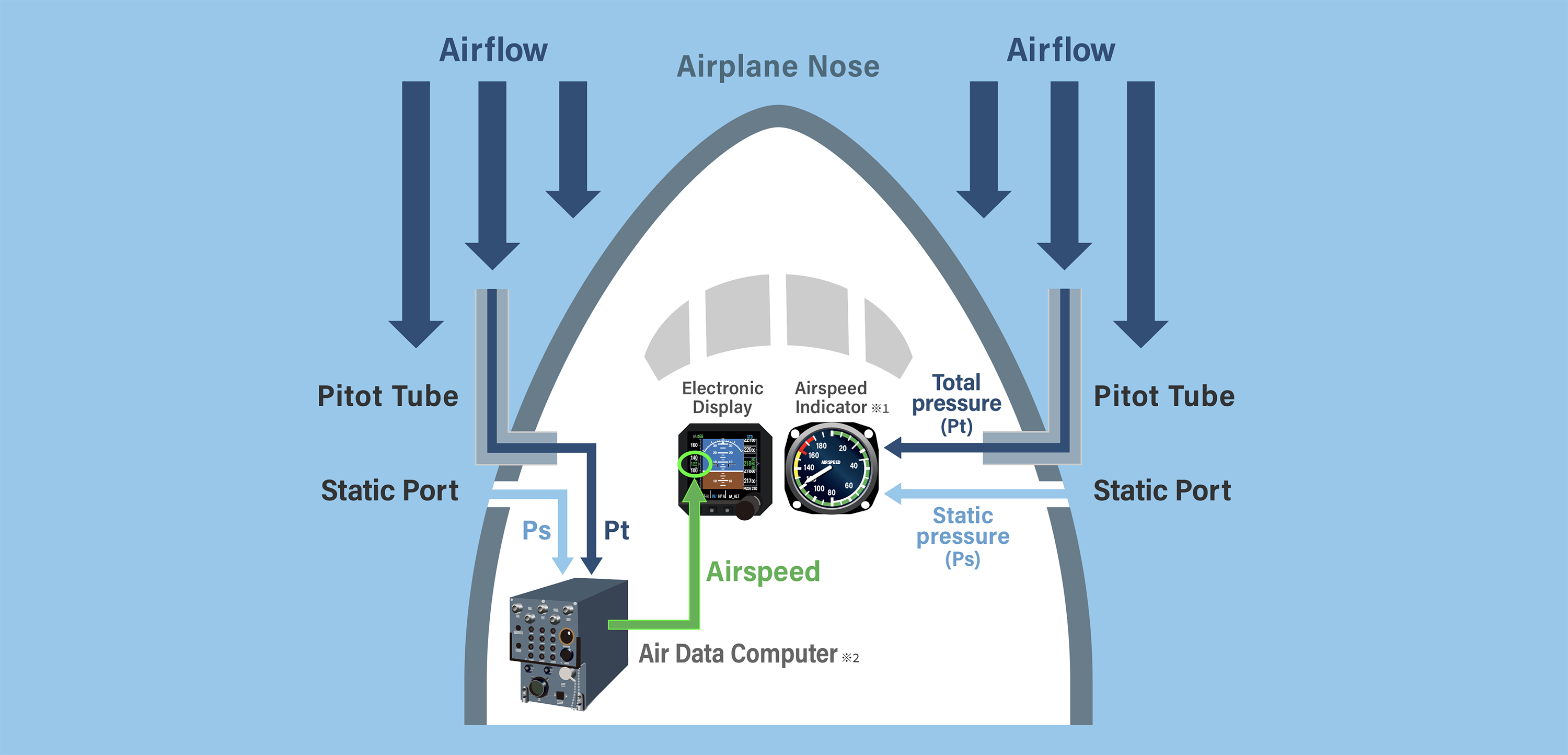
※1 As to the mechanism of how the Airspeed Indicator measures airspeed, refer to the section "vacuum diaphragm & open diaphragm" in "what is a diaphragm instrument?" of this site.
※2 In addition to airspeed, the Air Data Computer calculates various air data such as Mach number, altitude and ambient temperature.
Rich experience in development and fabrication
Although their principles are no secret, actual Pitot/Pitot-static tubes installed on aircraft are full of technologies that can be acquired only through experience. They are typically embedded with electric heaters so as to prevent moisture in the air from freezing on and clogging them at high altitudes (at which temperature drops below zero.) Working on these heaters requires a fair degree of expertise. Inappropriate handling can easily damage them. The worst case scenario is when such damage is latent and later causes an early failure in operation.
Tokyo Aircraft Instrument (TKK) is the exclusive manufacturer of Pitot/Pitot-static tubes in Japan. Since a collaborative R&D in 1956 with the then Technical Research and Development Institute of Japan Defense Agency, we have supplied Pitot/Pitot-static tubes to the Japan Self Defense Forces for over 60 years.
We also developed specialty Pitot-static tubes called "truncated pyramid-shaped multi-hole Pitot tubes", that were capable of detecting not only the total and static pressures but also the AoA and the sideslip angle, in a series of collaborative research with the Japan Aerospace Exploration Agency (JAXA), the former National Aerospace Laboratory. Those specialty probes were adopted for their Automatic Landing Flight Experiment and High Speed Flight Demonstration of the so-called Japanese space shuttle "HOPE" project, as well as the NEXST-1 small test plane of the Silent Supersonic Transport experiment.
Through such experiences TKK has accumulated priceless technologies and know-hows on developing, designing and manufacturing Pitot/Pitot-static tubes. Now, in response to strong demand from airlines for more reliable products, we are developing our first-ever commercial Pitot tube.
Tokyo Aircraft Instrument (TKK) is the exclusive manufacturer of Pitot/Pitot-static tubes in Japan. Since a collaborative R&D in 1956 with the then Technical Research and Development Institute of Japan Defense Agency, we have supplied Pitot/Pitot-static tubes to the Japan Self Defense Forces for over 60 years.
We also developed specialty Pitot-static tubes called "truncated pyramid-shaped multi-hole Pitot tubes", that were capable of detecting not only the total and static pressures but also the AoA and the sideslip angle, in a series of collaborative research with the Japan Aerospace Exploration Agency (JAXA), the former National Aerospace Laboratory. Those specialty probes were adopted for their Automatic Landing Flight Experiment and High Speed Flight Demonstration of the so-called Japanese space shuttle "HOPE" project, as well as the NEXST-1 small test plane of the Silent Supersonic Transport experiment.
Through such experiences TKK has accumulated priceless technologies and know-hows on developing, designing and manufacturing Pitot/Pitot-static tubes. Now, in response to strong demand from airlines for more reliable products, we are developing our first-ever commercial Pitot tube.
